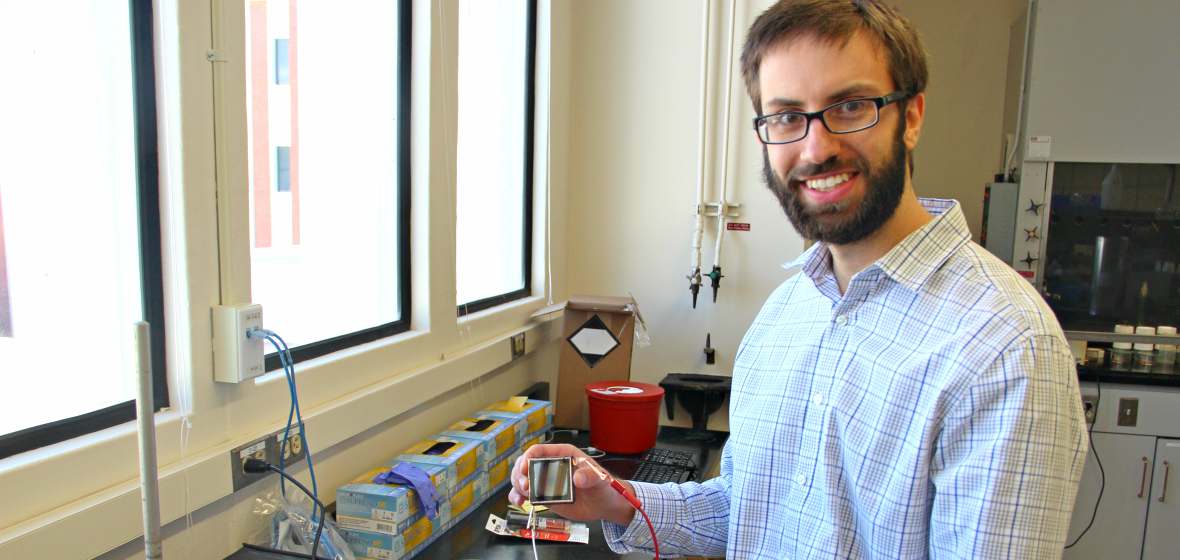Assistant Professor Christopher Barile develops smart windows. Smart windows, sometimes referred to as dynamic windows, change transparency by applying an electric voltage - they can turn from clear to completely dark with the touch of a button. While smart windows are an attractive alternative to standard windows, they can also promote energy savings depending on the outdoor temperature and sun's movement.
"Dynamic windows are windows that you can control the transparency of with the flip of a switch by applying a voltage," Barile, a chemistry professor in the College of Science, said. "They can go from clear to dark to anywhere in between."
Barile developed a method that uses electrodeposition to turn the windows dark. Electrodeposition is the process of moving metals around by applying an electric charge. In the windows, the metal in the window frame gets dissolved into a water-based gel when a voltage is applied. When the metal moves from the frame to the center of the window, this turns the window darker. Metals can block out light entirely and provide complete darkness, opposed to existing smart windows that result in a bluish hue.
Practical uses for dynamic windows can be seen in airplanes, buildings, cars and much more. By automating windows according to the user, time or weather, roughly 10 percent energy savings can occur.
"People have actually done calculations saying if you can build a very nice cheap, long-lasting, aesthetically pleasing dynamic window, on average, you can get about 10 percent energy savings for a typical building," he said.
Buildings consume roughly 50 percent of energy, making a 10 percent decrease a significant cut in energy consumption.
"If we were to walk out of this office right now and these were dynamic windows, from an energy efficiency standpoint, there would be a sensor on the door that would turn the windows completely dark," he said. "If it was a hot summer day, we wouldn't have to turn on their air conditioner as much."
The Barile research group is working to identify and solve problems associated with dynamic windows which are durability, cost, color and speed.
"If you can solve those things, people will have these all over the place," he said.
Barile's Background
Barile's focus in electrochemistry began as an undergraduate student at Stanford University. He conducted research as a freshman working on projects ranging from synthetic organic chemistry to bioinorganic chemistry.
"During this time, I first learned electrochemistry, which is a theme central to all of the work currently going on in my laboratory," he said.
During his post doctorate program at Stanford University, Barile started researching ways to improve upon window technology and developed the idea of electrodepositing metals.
Undergraduate Research Opportunities
Barile has been a supporter of undergraduate research opportunities for students at the University. In fall 2017, a group of undergraduate students published a paper on temperature stability for smart window technology.
"This paper was really exciting for me because this paper is all undergraduates," Barile said. "I'm a strong proponent of undergraduate research because I was lucky to have excellent undergraduate research experience. I think that's what got me into science"
Saul Juarez-Rolon is an undergraduate student and worked on the paper published in the fall.
"It's a lot of leverage for anything past our undergraduate point because it's important to make connections and academic research is a huge help propelling you forward," Juarez-Rolon said.
Research at the smart window lab will continue to offer many more opportunities for students to get involved.
"The smart window project we're working full steam ahead on, so there's definitely opportunities for students if they're interested," Barile said.











